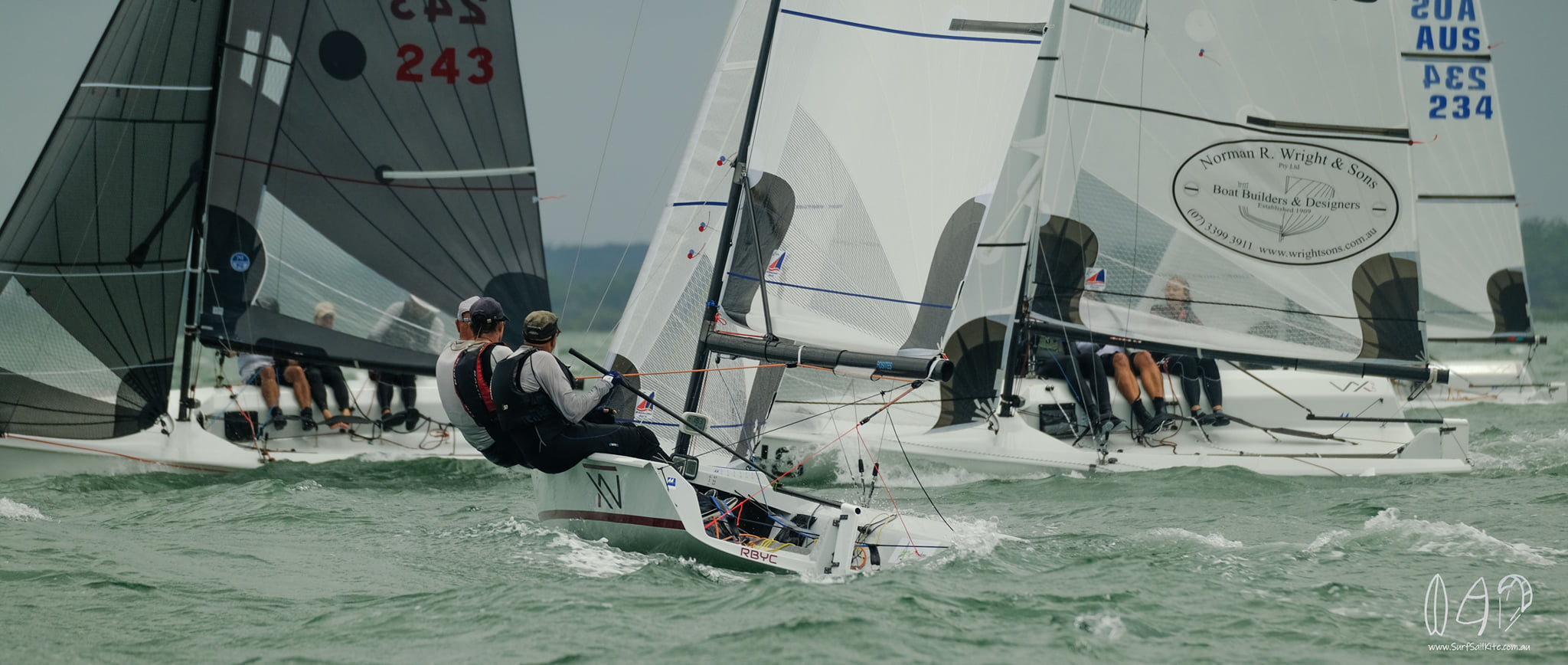

Tips And Rules For The Upwind Leg, To get to the first mark at the head of the fleet consider the following.
Sail on the Lifted Tack as Long as Possible
The basic idea when sailing upwind is to sail on the lifted tack as long as possible but there are a few other general rules that ensure you make the most of the upwind leg.
Avoid the corners:
It is true that every time you tack you slow down but that doesn’t mean that it is a good idea to simply sail two long tacks to the mark. The reason for this is that once you get to the layline, you are no longer able to take advantage of any shifts that come your way.
The other problem is that if any other boats get in your way or steal your wind, you may have to do 2 quick tacks. Two tacks not only slow you down but may cause you to overstand the mark and sail extra distance.
Sometimes overstanding, to leave a bit in the bank, may seem like a good idea because you can put the bow down and sail a little faster but because you are sailing further to get to the top of the beat, the result is a net loss.
Sail the long tack first:
unless there are other strategic reasons to do otherwise such as more pressure or a shift coming from the other side of the course.
The reason to sail the long tack first is that you have more options when the breeze shifts. If you have already reached the layline, a lift will mean that all boats inside you get an advantage over you and all you can do is ease sails and head for the mark having sailed extra distance.
Don’t give up: Tips And Rules For The Upwind Leg
In fluky conditions, and you find yourself on the wrong side of a major shift, stay cool, it’s not the end of the world. Persistence is as much a part of sailing as brilliance and hard work can often lessen the damage done by missing that shift.
If you do get caught out on the wrong side of a major shift, don’t be tempted to take a flier and split from the fleet to try to win back everything you lost in one fell swoop. Not only does it rarely work but in most cases, it simply compounds the loss.
- Get out on the course early and note how the wind is shifting before the start.
- If you are expecting a persistent shift, sail to the shift.
- Avoid the layline until the very end of the windward leg.
- If a wind shift skews the beat, sail the long leg first.
- Figure out your sail control settings before you start to sail the first beat so you can get off the line as fast as possible.
- Steering head to wind to gauge wind direction is not good because it flogs your sails unnecessarily, it is better to sail upwind before the start making note of the headings on each tack.
- It is best to tack short of the layline while you are still a good distance away as it allows you to still play the shifts.
BECOME A SAILING TO WIN MEMBER


